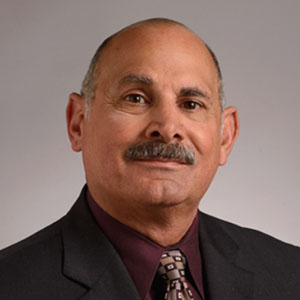
The headlines
As officers beat Tyre Nichols, a crime-fighting camera watched over them
“Cameras everywhere”: 2,000+ surveillance cameras keep constant vigil on Beverly Hills
Get used to face recognition in stadiums
Police across Minnesota turning to Hennepin County Sheriff for facial recognition software
Armed robots on pause with San Francisco Police…
The narrative
As the pendulum of public support for law enforcement swings back toward the vilification side, the criticism of technological tools intensifies commensurately. Society as a whole wants the police to apprehend criminals (even more so when they are personally victimized), yet there is an ongoing reticence to embrace the technology that enables cops to do the job more safely and efficiently. This merry-go-round of technology support is daunting and frustrating, to say the least. The ability of law enforcement to fight crimes is constantly imprisoned by activists and privacy zealots.
Between the lines
In 2016, five Dallas P.D. officers were murdered and seven others were wounded by an active shooter. Once they determined the location of the suspect, it was decided that it was unsafe for any officers to approach him. DPD decided to strap an explosive device on a remote control vehicle and it detonated near the suspect, immediately stopping the threat. The backlash for the use of this tool was swift from the usual critics, but subsequently extinguished by rational thought and common sense. Simply put: This was a brilliant and creative solution to terminate a dangerous person. Fast-forward to now. San Francisco P.D. recently sought authorization to use an armed robot in critical situations similarly to DPD. The San Francisco City Council initially authorized the use, but later recanted due to public pressure. So I pose this question: Who knows better about what is more effective, the P.D. or the critics? If your doctor recommended a life-saving treatment plan for an ailment, would you ask the public what they think first?
Now on to facial recognition technology (FRT). It is utilized effectively in many settings globally for government and private purposes. Train stations use it. Airports use it. Sports venues use it. Casinos have been using it for years to track cheats. Even U.S. Customs uses it to verify identity for travelers entering into the U.S. from abroad. And how do you think federal law enforcement identified all the people who breached the U.S. Capitol on January 6, 2021? Some departments have embraced FRT, yet many others have outlawed its use on the grounds of “privacy and equity.” Once again, a valuable tool is quashed by a small number of opponents. Those jurisdictions that ban FRT are signaling their virtues to the few, while limiting their ability to track suspects and solve crimes. In some instances, the jurisdictions that have banned FRT use seek the assistance of other agencies where FRT is employed. Meanwhile, groups like the Ban Facial Recognition Coalition are working feverishly to lobby entities across the country to further suppress the efforts of law enforcement. In other words, the use of FRT is inconsistent depending on where you live and the political will of the governing bodies.
The words “Glory be to God that a SkyCop camera was there to catch what happened” were uttered to the media by Van D. Turner Jr., the president of the Memphis branch of the NAACP, after discovering that the beating of Tyre Nichols had been captured on a streetlight-mounted surveillance camera. But across the country, advocates are calling upon jurisdictions to ban the use of such street cameras and automated license plate readers (ALPRs) based on “privacy concerns” and “data collection.” In this instance, the camera was celebrated because it captured police misconduct. Clearly a double standard is at play.
Meanwhile, in Beverly Hills, the city has embraced camera surveillance technology and is proud of its more than 2,000 surveillance cameras to monitor for criminal activity. In a recent news article, business owner Peter Sedghi said: “Anything is good. The more cameras. The more police officers. Anything helps.” By all accounts, the cameras have been useful in both deterring crime and investigating after an incident.
Now what?
The battle with technology will no doubt rage on. Ever since May 2020, many law enforcement leaders have been reluctant to press forward against the political winds of a small number of detractors. The police labor unions and national coalitions have been the only consistent strong voices of reason against the pushback. I would encourage leaders to stand up to the political pressure and press for adoption of technology, especially of the type that will save the lives of officers and the public. Apathy and introversion will delight those who are constantly trying to subvert policing efforts. There are far more lives that can be saved than endangered by the use of technology. Break the chains!






